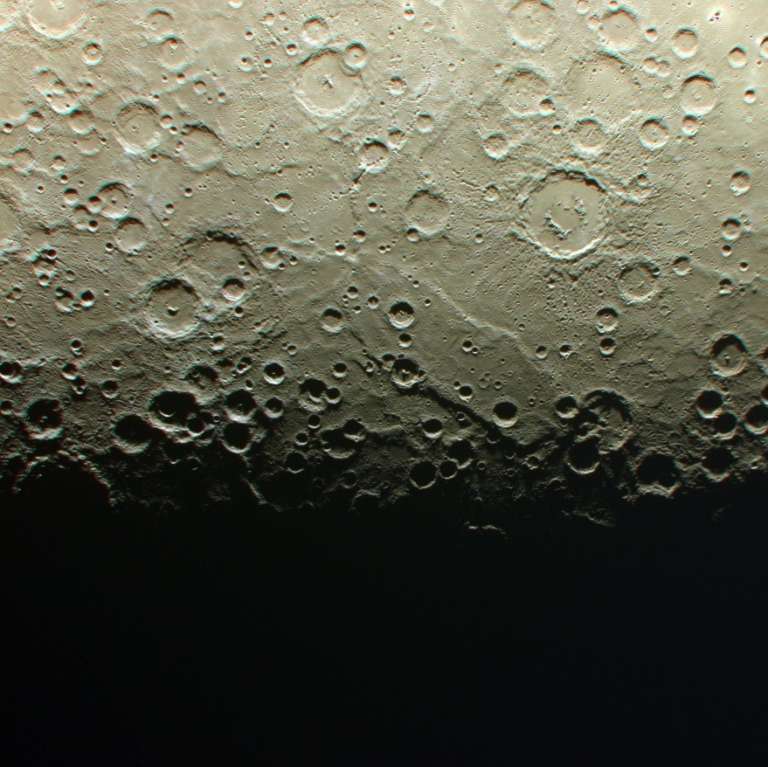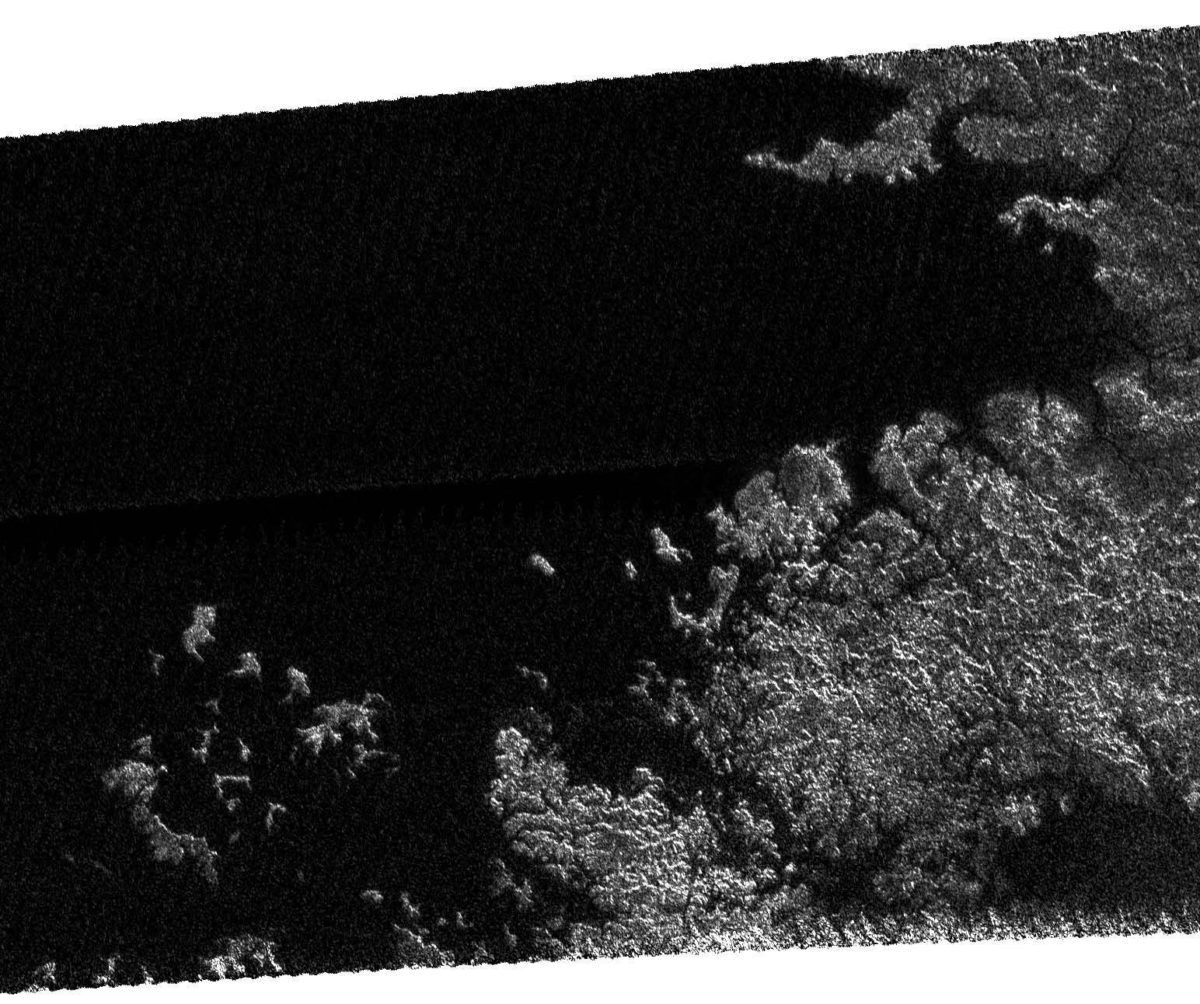Bill Dunford • May 28, 2013
The Shores of the Kraken Sea: Great Place Names in the Solar System
Mount Doom is a real place. It doesn't tower over Middle Earth, though. It's one of the tallest mountains on Saturn's planet-sized moon Titan. Doom Mons, as it is formally designated by the International Astronomical Union (IAU), may be a cryovolcano, formed somewhat like an earthly volcano, but spewing volatiles such as methane or water instead of molten rock. In fact, all of the peaks and mountain ranges on Titan are named for places in J.R.R. Tolkien's Middle Earth: there's Misty Montes, Angmar Montes, and others.
Despite their fairy tale names, these places are real. They're as real as Kilimanjaro--or the hills outside your own home town. If you had a fast ship (and a really warm space suit) you could climb them yourself. Maybe someday someone will.
For me, the evocative and beautiful place names to be found throughout the Solar System capture the thrill of deep space exploration, that mixture of hard physical reality with the wonder of the newly-known and the still unknown.
There's a long list of creatively-named places to visit. Here are just a few of my own favorites.
L'Engle Crater - Mercury
"I fill you with Naming. Be! Be, butterfly and behemoth, be galaxy and grasshopper, star and sparrow, you matter, you are, be!"
--Madeleine L'Engle
A Wind in the Door
The first example is also the newest. In March, the IAU named L'Engle Crater on Mercury in honor of Madeleine L'Engle, the author of the beloved sci-fi novel A Wrinkle in Time. One of the relatively few craters in the Solar System named for a woman, the 62-kilometer-wide impact feature can be found very near the south pole. It joins other Mercurian craters also named for writers, artists and musicians. (Speaking of Tolkien, he also has a crater newly named in his honor at the opposite pole.)
On the far left side of this image, right along the line between day and night, there is a crater rim half covered in shadow. L'Engle is the smaller crater just above it and to the right.

Mare Cognitum - Earth's Moon
"It is a name not so much of quiet satisfaction as of jubilation."
-- Carl Sagan
"A Planet Named George"
The place names on the Moon make for a particularly lovely litany that begs to be said out loud: Lacus Somniorum (the Lake of Dreams), Sinus Iridum (the Bay of Rainbows), Oceanus Procellarum (the Ocean of Storms). The lava plain Mare Cognitum wasn't named until the 1960s. It may not have the most lyrical label, but the story of its name is interesting. It means "The Sea that is Known" and the jubilation that Dr. Sagan refers to comes from the fact Mare Cognitum was so named because it was one of the first places on the Moon ever seen up close and explored thoroughly.
Before astronauts ever set foot on the lunar surface, robotic scouts led the way to the moon. First the Ranger 7 probe captured detailed images before it slammed into the surface at Mare Cognitum, and it was followed there by the soft-landing Surveyor 3. Finally, Apollo 12 arrived at the same spot, and that occasion provided the chance to take one of the most amazing photographs ever, a meeting that has never been repeated: a human being joining up with a robotic exploration spacecraft in space.
More recently, yet another robotic craft viewed the Surveyor 3 / Apollo 12 landing site when the Lunar Reconnaissance Orbiter trained its amazing high-res cameras on the scene.

Noctis Labyrinthus - Mars
"East of Olympus, ancient faults split thousands of miles of ground asunder to gouge the grand canyons of the Valles Marineris."
--Dava Sobel
The Planets
Who wouldn't want to explore the geology of these twisting passages that form part of the Solar System's largest canyon system? Especially when you consider that their name means the "Labyrinth of the Night." The feature probably formed from faulting ultimately caused by volcanic activity in Tharsis to the north. I assembled this mosaic from images obtained by Europe's Mars Express orbiter, which is marking its tenth year in space.

Kraken Mare - Titan
"Below the thunders of the upper deep
Far, far beneath in the abysmal sea
His ancient, dreamless, uninvaded sleep
The Kraken sleepeth."
--Tennyson
"The Kraken"
Perhaps the only thing on Titan stranger than cryovolcanoes are the vast lakes of liquid methane. In fact, the frigid moon has an entire "hydrological cycle" with ethane and methane in the place of water: clouds, rain, rivers. It's hard to see through Titan's thick orange cloud cover, so this image was obtained by radar. It shows part of the deliciously complex shoreline of the largest methane sea, more than a thousand kilometers across, named after the mythological beast. A proposed mission would have splashed down a robotic boat on Titan to sail coastlines like these. Sadly, it was not funded. (See how you can help revive NASA's planetary exploration budget.)

There are many, many more great place names among the planets. Do you have a favorite?
Support our core enterprises
Your support powers our mission to explore worlds, find life, and defend Earth. You make all the difference when you make a gift. Give today!
Donate

 Explore Worlds
Explore Worlds Find Life
Find Life Defend Earth
Defend Earth


